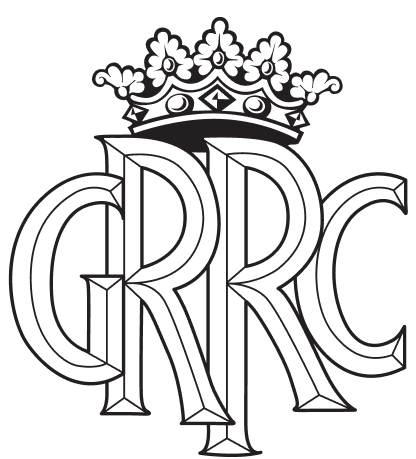I won’t mourn the loss of Seat | Axon’s Automotive Anorak
The 21st Century has yet to reach its first quarter mark, yet the initial 23 years have already seen the automotive sector lose a number of once-famous and respected car manufacturers, with many major and minor car makers already lost to history. So far, the list of car companies already lost from the UK and Europe includes Rover (which had its Viking burial when it ceased trading in 2005), Saab (2012), GAZ Volga (2010) and Reliant (2002), with Bristol Cars and Lagonda also being briefly revived since the year 2000, only to then quietly disappear again.

North America has seen an even greater number of marques fall by the wayside, such as such as Chrysler’s once dominant Plymouth brand, which was killed off in 2002. Once the world’s leading car maker, the poorly-managed General Motors (GM) pensioned off its historic Oldsmobile marque in 2004 (itself, once the largest vehicle manufacturer in the pioneering motoring era), its much-loved Pontiac and ‘value import busting’ Saturn brands were both closed down in 2010. Hummer was also lost, although it has since revised this name plate as an extreme stand-alone EV SUV model/sub-brand under the GMC banner. Not to be left out, Ford - the last of the Detroit ‘Big Three’ - ditched its mid-price Mercury brand in 2011.
This list of causalities is bound to increase in the coming years as the electrification era takes over from the long and glorious reign of the internal combustion engine (ICE). Therefore, after something of a lull in automotive culls, suddenly last month the Volkswagen Group announced that another established car brand is due for the chop. The German giant is going to abandon its Spanish Seat badge in favour of its new up-start Cupra, the brand that grew out of Seat originally as a sporty-tinged sub-brand. At September’s Munich Motor Show, VW confirmed that “the future of Seat is Cupra.”

VW will retain the Seat badge for the lifecycle of its current (mostly ICE) range, but these will be replaced by Cupra-branded EV models, with future Seat branding applied only to other none mass-production vehicles, such as personal mobility transport solutions, like mopeds and e-scooters, which it launched recently.
Although Volkswagen has a proven track record of care-taking other automotive brands, including Skoda and Audi, it has never really managed to make a convincing fist of its Seat division since acquiring it in 1986. Its attempts to try and turn it into an aspirational Spanish Alfa Romeo-esque rival constantly falling wide of the mark. There’s a certain irony that in the year VW has chosen to signal the death knell for Seat as a mainstream car producer, 2023 marks Seat’s 70th anniversary since it built its very first car; the Seat 1400, a traditional four-door saloon version of the Fiat 1400, built under licence. It is also 40 years since Seat began production for Volkswagen of its Passat and Santana mid-sized D-class models, plus the Polo II under licence at Pamplona plant, having struck a deal one year earlier to become the official Spanish importer and distributor for Volkswagen and Audi.
Seat also made its first export sales under its own brand name 40 years ago, sending a batch of its Ronda hatchbacks to Germany in 1983. This inaugural Seat-branded export was to prove controversial, however, and ultimately led to Seat attending the international courts against both Fiat (the Ronda clearly being a mild rework of the Fiat 138 Ritmo/Strada) and Honda. The latter claimed the Ronda nomenclature was too close to the Japanese vehicle maker’s name and could lead to confusion.
For the first 30 years of the brand’s life, up until the mid-1980s, all Seat production models had been derived from regular Fiat models, built under licence in Spain. A few Fiats were adapted to meet local market demands by Seat, with unique-to-Seat factory-built four-door versions of the Fiat/Seat 600, 850 and 127, to cope with the size of Spanish families that were generally larger than the European-average. When Fiat stopped production of its popular 850 Berlina in 1971, Seat continued to build the model and export it to a few selected markets, including the UK, although it retained its Fiat badges.

The Seat 850 was eventually replaced in 1974 by the Seat 133, a rebooted 850 sold in overseas markets as a Fiat. Seat’s first true home-grown model was the stylish Fiat 127-based 12/00/1430 Sport, an appealing coupe that was originally designed as a rear-engined, NSU badged successor for the popular NSU Prinz models. VW’s acquisition of NSU and its merger with Audi in 1969 killed this attractive coupe off. VW elected instead to replace the Prinz with an Audi badged 50 hatchback; the model that originally spawned the VW Polo in 1975.
By the early 1980s Seat’s domestic sales and Spanish market dominance were under increasing threat from ‘foreign’ manufactures that chose to build their own cars in Spain, a list that included the Ford Fiesta and GM’s new Opel Corsa/Vauxhall Nova. With falling sales and dwindling profitability, Fiat grew tired of its needy Spanish off-shoot, and declared that the business was up for grabs. The Volkswagen Group showed an interest, initially to get a useful foothold in the expanding post-Franco Spanish market through Seat’s extensive dealer network to sell its VW and Audi products. In 1983, VW dangled a tempting carrot for Seat to locally produce its Passat and Polo models, this deal making up for the local manufacturing loss of previous Fiat models, such as the 131 and 132. Using some of VW’s welcome funding, Seat updated some of the previous Fiat-derived models, such as the Panda (to create the Seat Marbella), 127 (to create the Fura) and Ritmo/Strada (renamed the Ronda and Malaga), ahead of launching its own first truly none-Fiat based Seat model, the Ibiza, in 1986 (although entry models retained Fiat’s tried and trusted 903cc engine).
An instant success in all European markets, the Giugiaro-designed Ibiza quickly helped to establish the previously unknown (outside of Spain) Seat brand name. The Ibiza was followed up in 1991 by the large, five-door Toledo that was fully developed with Volkswagen backing and expertise, it being based on a Golf platform, to complete Seat’s painful divorce from its former Fiat partner.
Many other Seat models followed through the 1990s and beyond, each one perfectly acceptable but rarely remarkable and outstanding in its field, rather like the VW’s these models were based upon. Arosa, Cordoba, Alhambra, Mii, etc. Okay cars all, but nothing really to write home about or get the pulse racing. The original VW Group A platform-based Seat Leon of late 1999 might be the only exception to this, hence that model (now in its fourth generation) also being available as a Cupra. Ultimately, the rest of Seat’s models during its Volkswagen ownership era had remained worthy but dull. I suspect the loss of this Spanish marque will not be so greatly mourned as some of the other ‘lost marques ’of the 21st Century.
Axon's Automotive Anorak
Seat
1400
600
133
Ibiza
Leon
Road
News



































































